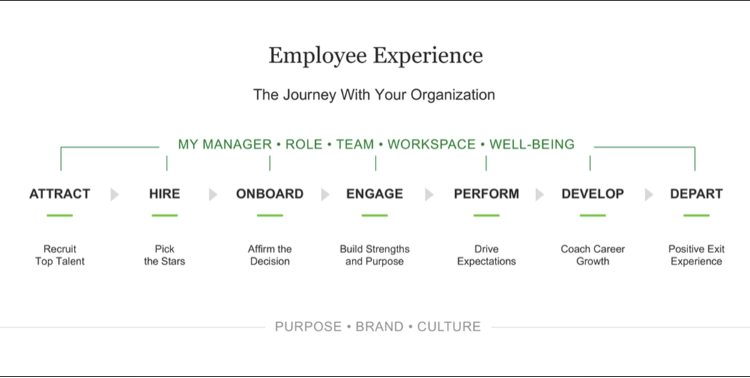Designing the Employee Experience: From First Click to Final Goodbye
I remember asking a new hire once, “How was your first day?” They paused, smiled politely, and said, “Well… I found the HR office eventually.” That’s when it hit me — the employee experience doesn’t start on Day One. It starts the moment someone considers joining us.
Too often, we think of employee experience as something that begins after the offer letter is signed. But in reality, it begins with that first impression — the job posting, the company page, the career site. Was it easy to navigate? Did it feel human? Did we engage or just broadcast? These are not minor details. They set the tone and anchor for everything that follows.
Then comes the hiring process itself. And let’s be honest — for many companies, this is where the wheels start to wobble—endless application steps, cold auto-replies, generic job descriptions, and sometimes no response at all. Now imagine, instead, a candidate receiving a short welcome video from the hiring manager or a personalized follow-up note. That’s not just good recruiting — that’s designing an experience.
When someone finally joins, the first day should feel like walking into a room where people were expecting you — not stumbling into a sea of forms and forgotten passwords. I’ve often said this: Ask someone about their first day, and you’ll hear what they really think of your culture.
If it felt amazing — warm welcome, introductions, clarity of purpose — chances are, you’ve set them on the right path. But if it felt transactional, that impression lingers far longer than we think.

Of course, the experience doesn’t stop once you hand someone their laptop. The real question is: do we continue to engage? Are we listening? Are we checking in — not just through annual surveys, but in the flow of work? Every touchpoint matters. The way we conduct performance conversations, the moments we ask for feedback, even how we celebrate small wins — all of this contributes to the story employees tell about us.
Are we developing our managers on the employee experience? Remember this, after they leave us on the first day, they now enter their department. That is when the manager takes over. This was a process that I designed, but it came from feedback. “First day was great, but when I got to my department, it was like I was not expected, etc”. That experience was not great. That is when we decided to put all the hiring managers through the “employee experience” for their department.
And let’s talk about performance. Traditional models often have managers evaluating employees in a one-way conversation. But what if employees had a chance to rate their managers, too? What if performance were about shared accountability, not just metrics, but momentum? That should also enable us to promote not only from the technical side but the people side as well. In other words we promote managers based on people skills.
Equally important is how we handle development. Growth is the glue that keeps people engaged. When employees feel like they’re learning, stretching, and being guided toward a bigger version of themselves, they stay. Not because they have to — but because they want to. And in today’s climate of constant disruption, internal mobility isn’t just a perk. It’s a strategy. If someone is thinking of leaving, did we offer them a different path within?
Finally, let’s not forget the last mile of the journey — when someone decides to move on. In the past, departure was seen as an exit. Now, it’s a transition. The question is: would we rehire them if they wanted to return? Would they recommend us to others? That moment of goodbye is part of the employee experience, too — and if done right, it turns leavers into lifelong brand advocates.
In the end, employee experience is not a single moment. It’s the sum of many moments—strung together, felt deeply, remembered long after someone’s gone. The real challenge for organizations is whether we’re designing those moments with care, or just letting them happen by default.
Because the experience we build — from first click to final farewell — is the culture we create.


